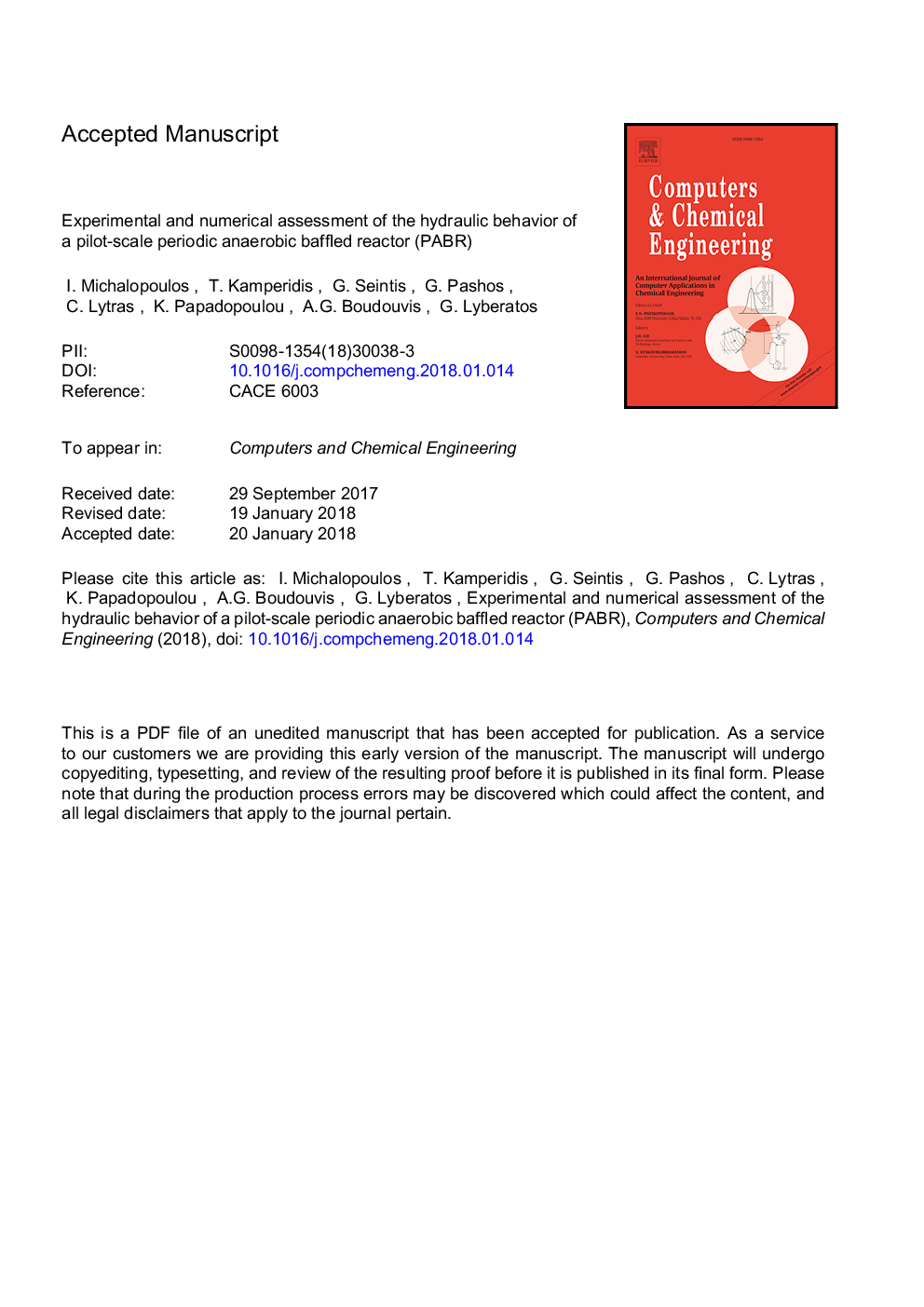| Article ID | Journal | Published Year | Pages | File Type |
|---|---|---|---|---|
| 6594959 | Computers & Chemical Engineering | 2018 | 31 Pages |
Abstract
A major factor that determines the mixing pattern inside a reactor is the Residence Time Distribution (RTD). The aim of this paper is the study of the hydraulic behavior of a pilot-scale Periodic Anaerobic Baffled Reactor (PABR) through experimental RTD tests and the development of a CFD model. The tank in series model was used for the determination of the equivalent number (NR) of Continuous Stirred Tank Reactors (CSTR) that simulates the mixing pattern. The hydraulic “dead” space (Vd) was also calculated. Both experimental and simulation results indicate the flexibility of the reactor to perform as a CSTR (NR=â¯1, Vd=â¯38.6%-39.6%), as a Plug Flow Reactor (PFR) (NR=â¯10-16, Vd=â¯25%-35.4%) or intermediate between the two, depending on the operating parameters. The CFD model can be used for the optimization of the reactor's geometry and for the selection of the optimal operating parameters depending on the type of wastewater to be treated.
Keywords
HRTPABRperiodic anaerobic baffled reactorsRTCOMSOL MultiphysicsABRUASBOLRPFRCSTRHydraulic behaviorRTDVFAVolatile fatty acidsResidence time distributionCFDComputational fluid dynamicsAnaerobic baffled reactorplug flow reactorcontinuous stirred tank reactorSolids retention timehydraulic retention timeModelingOrganic loading rateUpflow anaerobic sludge blanket
Related Topics
Physical Sciences and Engineering
Chemical Engineering
Chemical Engineering (General)
Authors
I. Michalopoulos, T. Kamperidis, G. Seintis, G. Pashos, C. Lytras, K. Papadopoulou, A.G. Boudouvis, G. Lyberatos,
